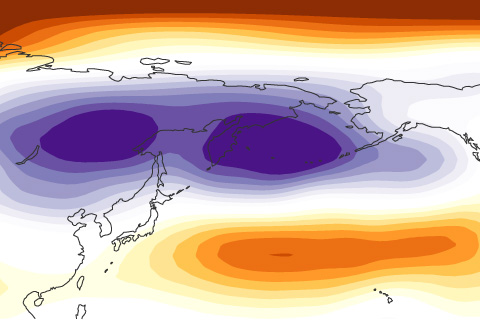
From Alaska to New Hampshire to Hawaii, NOAA Sea Grant programs are working to help coastal communities build resilience to changing conditions, including changing climate.

The Beaufort Sea, the largest Arctic Ocean freshwater reservoir, has increased its freshwater content by 40 percent over the past two decades. How and where this water will flow into the Atlantic Ocean matters in local and global ocean conditions, including the Atlantic Meridional Overturning Circulation.

Clouds have both cooling and warming effects on climate, so a climate model's ability to parse cloud effects can reduce uncertainty in future climate projections. A new study distinguishes between climate models with low and high climate sensitivity related to clouds and aerosols.

A new study in Nature Climate Change finds regional variations in snowpack melt as temperatures rise. The researchers conclude that, in the United States, snowpack in coastal regions and the south is most “at-risk” from climate change while snowpack in the northern interior of the country is less vulnerable.

La Niña has been going strong this winter, but the Northern Hemisphere doesn't appear to be paying attention. Our blogger discusses what may be going on.

Tornados, like most weather phenomena, are hard to predict more than several days in advance. By focusing on active tornado seasons that may be linked to climate signals, researchers at NOAA’s Atlantic Oceanographic and Meteorological Laboratory have made a small but important step in seasonal tornado that shows promise in predicting active seasons up to two months in advance.